Your shopping mall displays look dull and uninviting. Products don't stand out, and shoppers pass by without a second glance. You are losing sales because your lighting is failing.
COB LED downlights are key to great visual merchandising. They use a focused, high-quality beam of light to highlight products, making their colors and textures pop. This grabs customer attention, creates a premium feel, and ultimately drives more sales in a competitive retail environment.
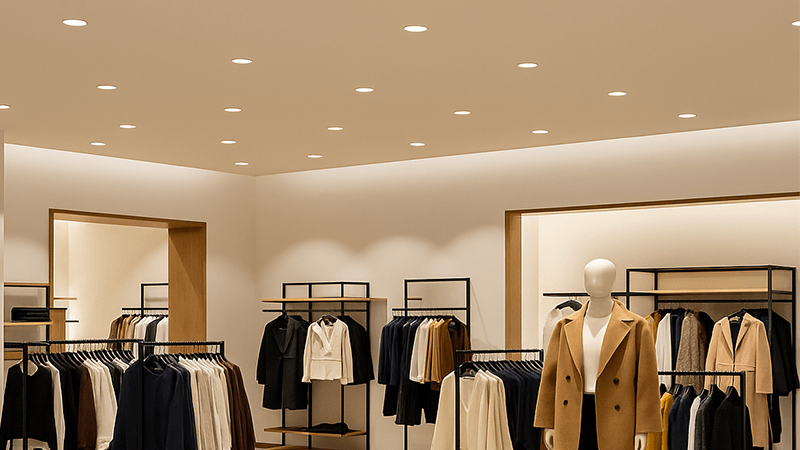
Great lighting is not just about making a space bright. It's a powerful sales tool. When you walk into a well-lit store, you feel it instantly. The products look better, the atmosphere is more inviting, and you feel more inclined to browse and buy. As someone who has spent his entire career in lighting, I've seen firsthand how the right fixtures can transform a business. Let’s explore how something as specific as a COB LED downlight can make all the difference. This is about turning casual browsers into paying customers.
Why is lighting important in visual merchandising?
Products on your shelves look flat and unappealing. Shoppers walk right by them. Your sales are suffering because the visual presentation is weak and fails to capture any attention.
Lighting is crucial because it creates mood, guides customers through the store, and highlights key products to make them look more attractive. Good lighting directly leads to better customer engagement1 and increased sales.
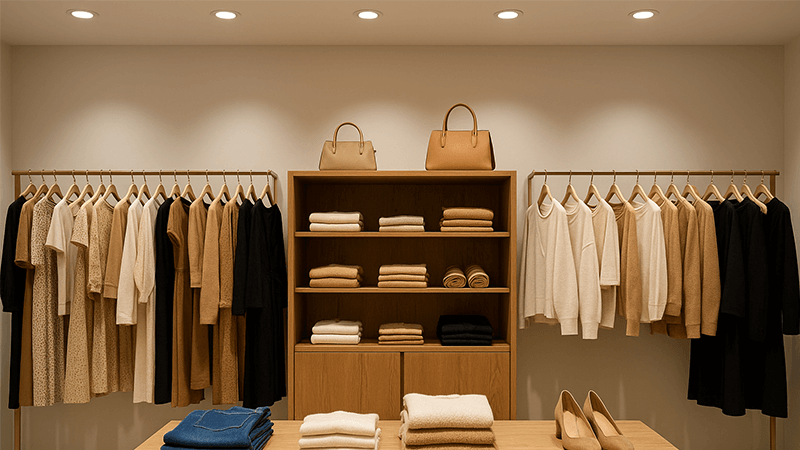
Dive Deeper
When I started my first lighting factory, one of our early clients was a boutique clothing store. They had beautiful clothes, but their sales were slow. The entire store was lit with uniform, flat ceiling panels. Everything was visible, but nothing was special. We worked with them to change their lighting strategy2, and it taught me a valuable lesson about visual merchandising3 that I carry with me at iPHD today. Effective lighting does three jobs at once.
Creating Atmosphere and Mood
First, lighting sets the mood. Think about the difference between a brightly lit, energetic sports store and a softly lit, intimate luxury boutique. The lighting is telling you how to feel. We used warmer temperature lights (around 3000K) in that boutique to create a cozy, premium atmosphere. It made the fabrics look richer and the space feel more exclusive. The right mood makes customers feel comfortable, encouraging them to stay longer and connect with the brand.
Guiding the Customer Journey
Second, lighting acts as a guide. You can use light to create paths, drawing a customer's eye from the entrance toward high-margin displays or new arrivals. In the boutique project, we installed a series of spotlights that created a subtle trail leading to a feature wall of their most expensive coats. Before, those coats were lost in the clutter. After, they became the star of the show. Sales for those specific items increased by nearly 40% in one month. It’s like creating a treasure map where the treasure is the product you want to sell most.
Highlighting Key Products
Finally, and most importantly, lighting makes your products shine. This is called accent lighting4. It’s the opposite of flat, uniform light. It's about creating contrast. A focused beam of light on a handbag, a pair of shoes, or a piece of jewelry makes it pop. It separates the product from its surroundings and tells the customer, "Look at this." This focused light reveals detail, texture, and true color, which builds perceived value.
| Factor | Poor Lighting | Good Lighting |
|---|---|---|
| Atmosphere | Flat, boring, uninviting | Inviting, engaging, on-brand |
| Guidance | Confusing, no clear path | Clear path, directs to key areas |
| Product Appeal | Dull, colors look wrong | Vibrant, textures pop, looks high-quality |
What are the three types of lighting for visual merchandising?
Your store lighting feels one-dimensional. Everything is lit with the same brightness, so nothing stands out. This flat lighting fails to create any visual interest5 or hierarchy for shoppers.
The three main types of lighting are ambient, task, and accent. Ambient provides overall illumination, task lights are for functional areas like counters, and accent lighting highlights specific products to create focus.
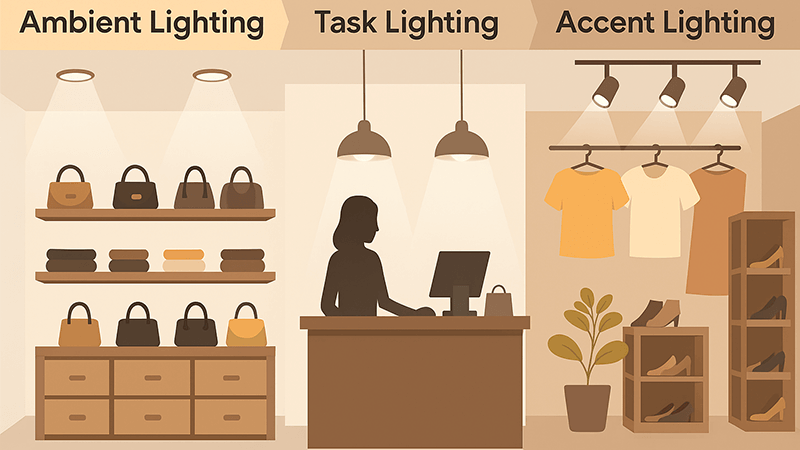
Dive Deeper
The most successful retail spaces use a layered approach with all three types of lighting working together. Thinking about them as separate tools in your toolbox is the best way to design a space. Mixing them correctly is what creates a professional and effective lighting plan. Over the years, I've helped countless project contractors and distributors understand this balance. It’s a core principle we build into our product recommendations at iPHD.
1. Ambient Lighting
This is your base layer. It's the general, overall light that makes a space functional and safe to navigate. Think of it as the foundation of your lighting design6. In the past, this was often done with fluorescent tubes, but today, LED panels and wide-beam downlights are much more common. The goal here is not to create drama but to provide comfortable, uniform brightness. However, the quality of this light still matters. It should be pleasant and render colors reasonably well, setting a baseline for the other layers.
2. Task Lighting
This is functional lighting, focused on areas where employees or customers perform specific tasks. Common examples include:
- Checkout Counters: Bright, clear light is needed for staff to see money and products, and for customers to read receipts.
- Fitting Rooms: This is critical. You need bright, flattering light so customers can see how clothes actually look. Bad fitting room lighting can easily kill a sale.
- Service Desks: Similar to checkout counters, this area needs clear illumination for work.
Task lighting is all about practicality. It prioritizes function over aesthetics, but it must be integrated smoothly with the other lighting layers.
3. Accent Lighting
This is the "money" layer for visual merchandising. Accent lighting is what creates drama, draws attention, and sells products. This is where fixtures like COB LED downlights7 and track lights excel. They create a focused pool of light that is significantly brighter than the surrounding ambient light. This contrast is what makes a display stand out. For accent lighting4 to be effective, the rule of thumb is that it should be at least three times brighter than the ambient light.
| Lighting Type | Purpose | Common Fixtures | Effect on Shoppers |
|---|---|---|---|
| Ambient | General, overall illumination | LED Panels, Wide-beam Downlights | Provides basic visibility and comfort. |
| Task | Illuminates specific work areas | Linear Strips, Pendants, Downlights | Enhances functionality and safety. |
| Accent | Highlights products and displays | COB Downlights, Track Spotlights | Creates focus, drama, and perceived value. |
By layering these three types, you create a visually rich environment that is both functional and beautiful. It guides customers, makes them comfortable, and most importantly, makes your products look irresistible.
How does lighting affect shopping?
Shoppers in your mall seem distracted or leave quickly. They don't engage with the products enough. You worry that the store environment itself is pushing them away before they can buy.
Lighting directly influences a shopper's mood, perception of value, and buying decisions. Good lighting can make a space feel welcoming and products seem high-quality, encouraging longer stays and more purchases.
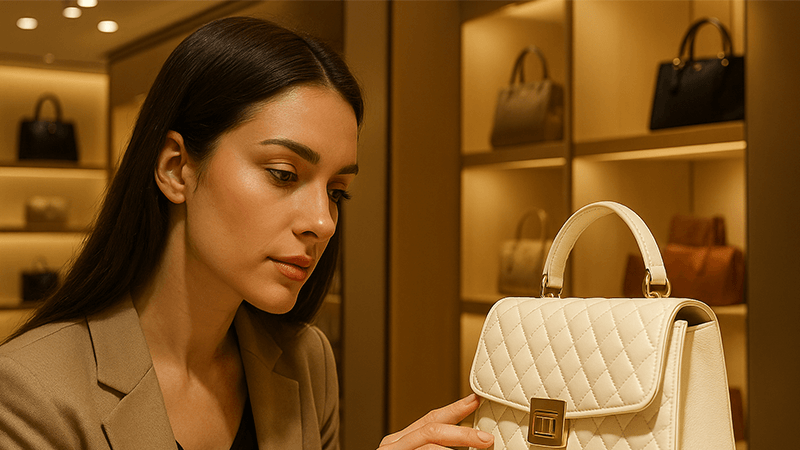
Dive Deeper
Lighting isn't just about visibility; it's about psychology. The light that falls on a product can change how a customer feels about it, and about your store. As a manufacturer, I am obsessed with the quality of light our products produce because I know it has a direct impact on our clients' success. When we design a COB LED downlight, we think about every detail, from the color it renders to the comfort it provides to the shopper's eye.
Perception of Quality and Color (CRI)
Have you ever bought a piece of clothing, only to find it looks like a completely different color when you get it outside? This is due to poor Color Rendering Index (CRI)8. CRI is a scale from 0 to 100 that measures how accurately a light source shows an object's true colors. Sunlight has a CRI of 100. For retail, a CRI of 90 or higher is essential. High-CRI lighting makes products look vibrant and real. It builds trust. A customer who trusts that the colors they see are accurate is much more confident in their purchase. COB LEDs are excellent for achieving high CRI, which is why they are perfect for showcasing fashion, food, and cosmetics.
Health, Comfort, and Blue Light Hazard
Another critical factor is visual comfort. Harsh, glaring, or flickering light can cause eye strain and headaches. It makes a space feel stressful and uncomfortable, causing shoppers and staff to want to leave. This is where an important technical standard comes in: Blue Light Hazard. All light sources emit some blue light, but high-energy blue light can be harmful to the eyes over time. This risk is categorized by Risk Groups (RG).
| Risk Group | Risk Level | Recommendation for Malls |
|---|---|---|
| RG0 (Exempt) | No risk | Ideal for all applications |
| RG1 (Low Risk) | No risk under normal use | Minimum standard for healthy lighting |
| RG2 (Moderate Risk) | Risk with long, direct exposure | Not recommended for general lighting |
At iPHD, we ensure our COB light sources meet RG1 or, preferably, RG0 standards. This is a non-negotiable part of our commitment to "Lighting Quality You Can See." It means our lights are safe and comfortable for people to be under for extended periods. For a shopping mall, where customers and employees spend hours, using lighting with low blue light hazard9 is crucial for creating a healthy and welcoming environment. It shows you care about their well-being, which is a subtle but powerful brand message.
How has LED lighting helped theaters?
You want to create dramatic, eye-catching displays but don't know how. Your current lighting is functional, but it lacks the "wow" factor that makes products truly pop and feel special.
LED lighting gives theaters precise control over brightness, color, and focus, much like how COB LEDs help retail. This technology allows them to create drama and perfectly direct the audience's attention.
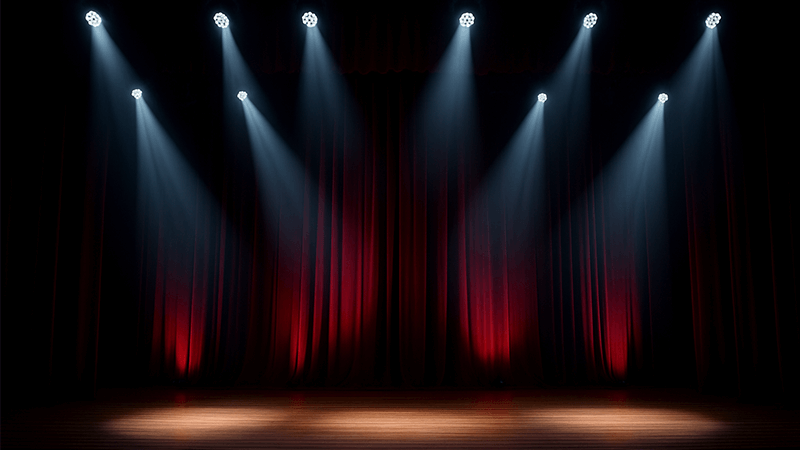
Dive Deeper
It might seem strange to compare a shopping mall to a theater, but the principles of engagement are identical. In a theater, the director uses lighting to tell the audience exactly where to look. On a dark stage, a single spotlight on an actor commands 100% of your attention. We can, and should, apply that same thinking to visual merchandising. Your hero product is the lead actor, and the display is its stage.
Applying Theatrical Principles to Retail
The goal in retail is to control the customer's gaze. When you use accent lighting effectively, you are essentially creating a series of small "stages" throughout your store. A mannequin showing a new collection, a display case of watches, or even a pyramid of fresh oranges in a supermarket can become a focal point. I remember working on a project for a large electronics store. They used COB LED track lights with narrow beams to spotlight their latest flagship smartphones, just like a museum would light a precious artifact. The phones looked sleek and important, drawing customers in for a closer look. They were using theatrical principles to sell technology.
The Power of Precision with COB LEDs
This level of control is possible because of modern LED technology, especially Chip-on-Board (COB) LEDs. Unlike older light sources, LEDs can be paired with optics like lenses and reflectors to create very precise beam angles.
- Narrow Beams (10-15 degrees): Perfect for creating a dramatic spotlight on a small object like jewelry or a single shoe.
- Medium Beams (24-36 degrees): Great for lighting a mannequin, a small group of products, or a piece of art.
- Wide Beams (60+ degrees): Used for washing a larger wall display or contributing to ambient light.
This flexibility allows a lighting designer to paint with light, creating layers of brightness and shadow that add depth and interest to the entire store.
Energy Savings and Heat Reduction
Theaters were early adopters of LEDs for another reason: old halogen spotlights generated enormous amounts of heat and used huge amounts of electricity. Switching to LEDs drastically cut their energy bills and made stages cooler and safer for performers. This benefit is just as important in a shopping mall. Less heat from lighting means a lower load on the air conditioning system, which is a major operational cost. Also, the cool beam from an LED won't damage delicate merchandise. You can light cosmetics, fresh food, or fine fabrics without worrying about heat discoloration or spoilage. This is a practical, money-saving advantage that makes LEDs the only logical choice for modern retail.
Conclusion
COB LED downlights are a vital tool for retail. They use theatrical principles of light and shadow to create focus, enhance product value, and guide the customer, directly boosting engagement and sales.
Understand the role of lighting in enhancing customer experience and encouraging purchases. ↩
Discover proven lighting strategies that can transform your retail space and boost customer engagement. ↩
Learn about the importance of visual merchandising in attracting customers and increasing sales. ↩
Discover how accent lighting can highlight products and create visual interest in retail. ↩
Discover how effective lighting can add depth and interest to retail displays. ↩
Discover effective lighting design practices that enhance the shopping experience and boost sales. ↩
Explore how COB LED downlights can enhance product visibility and drive sales in retail environments. ↩
Understand the significance of CRI in ensuring accurate color representation in retail lighting. ↩
Learn about the impact of blue light on eye health and how to choose safe lighting for retail. ↩

